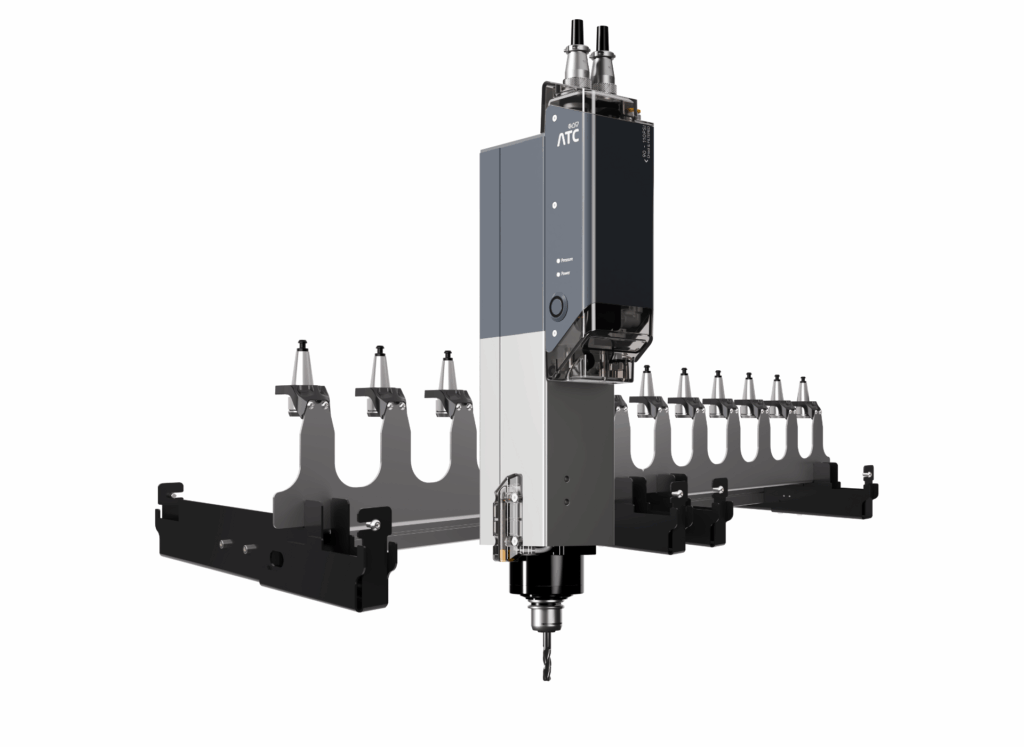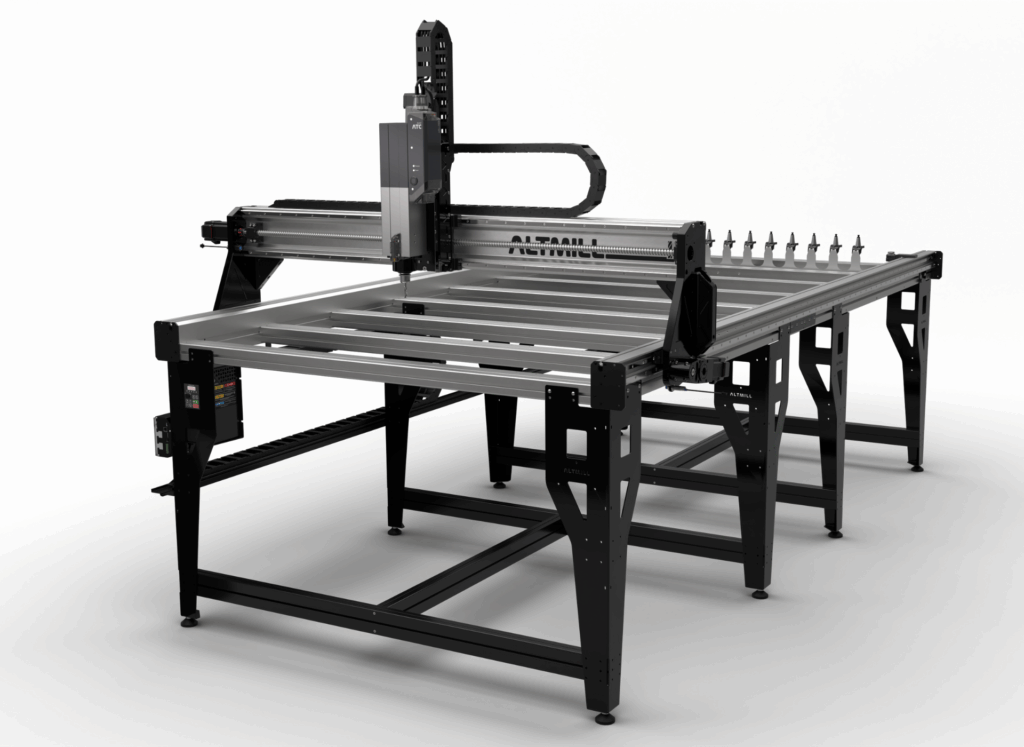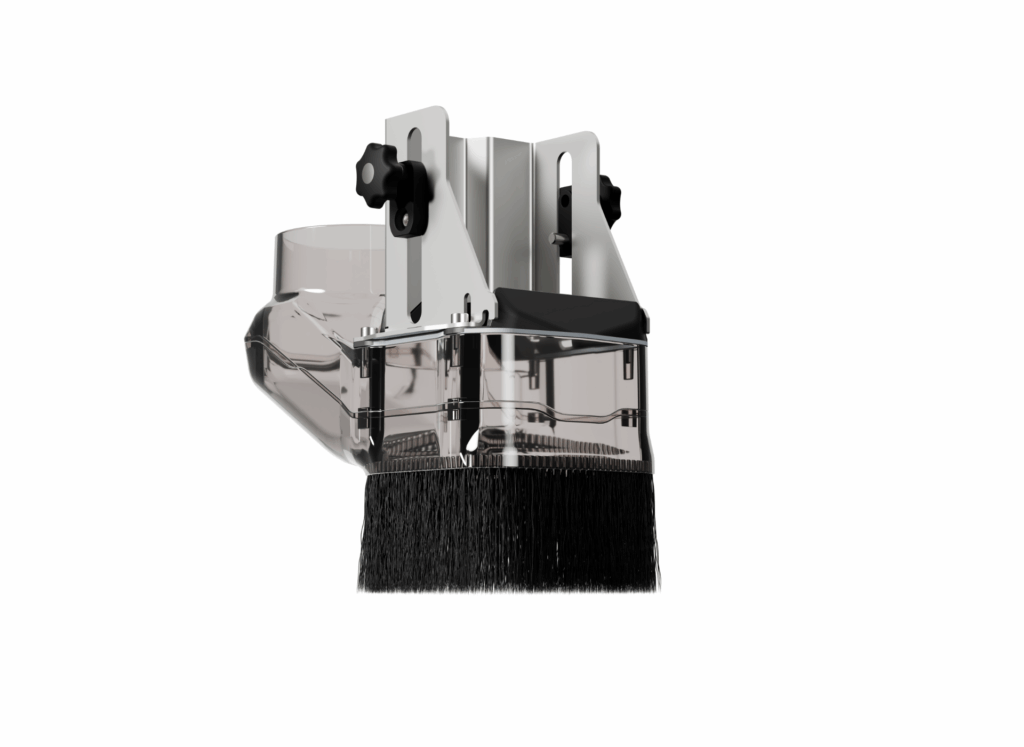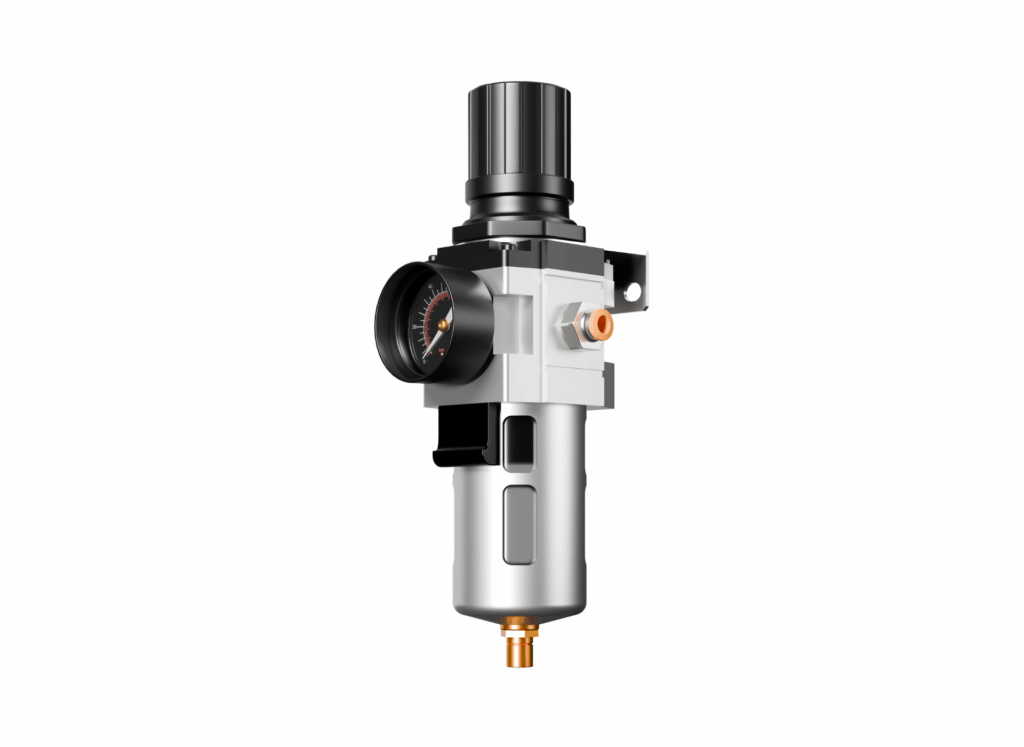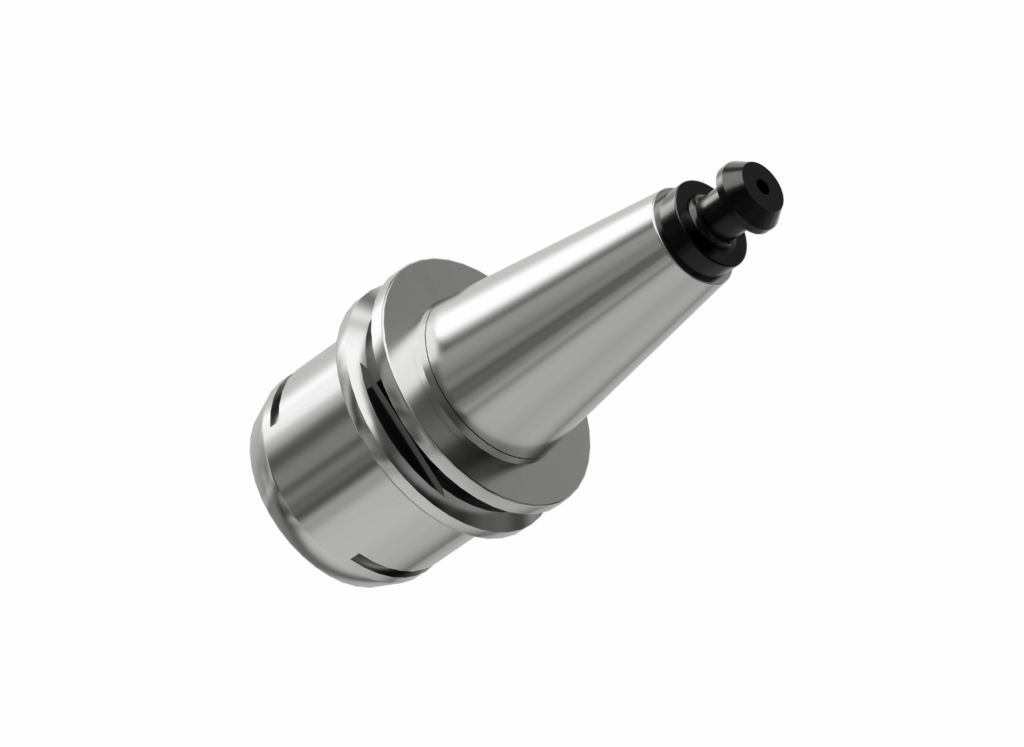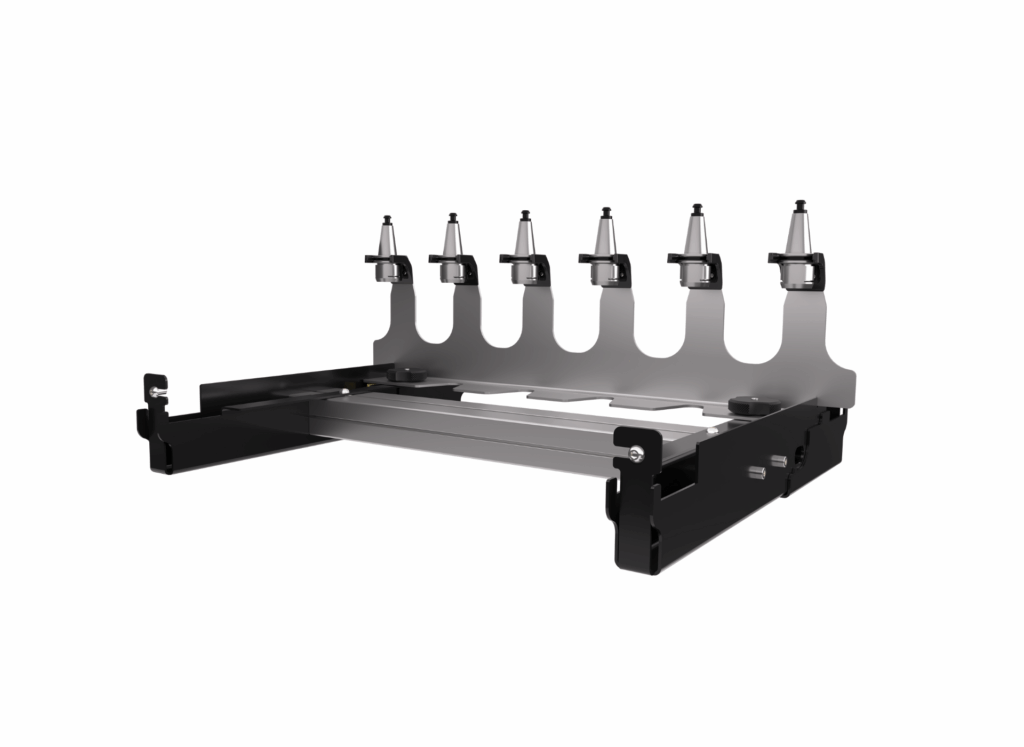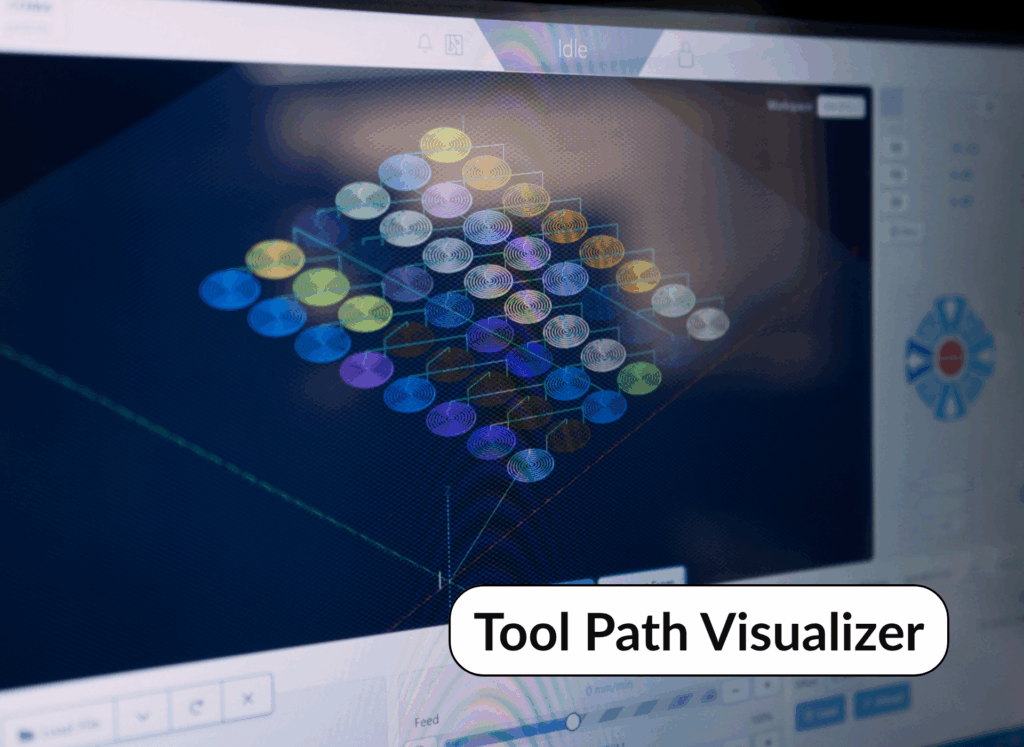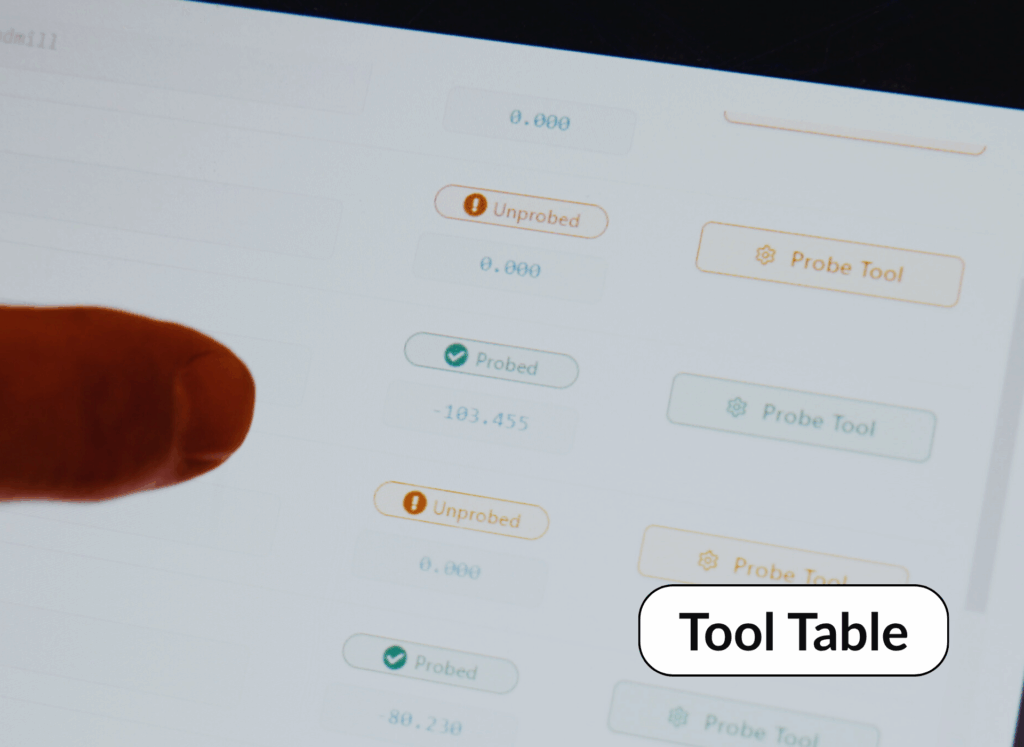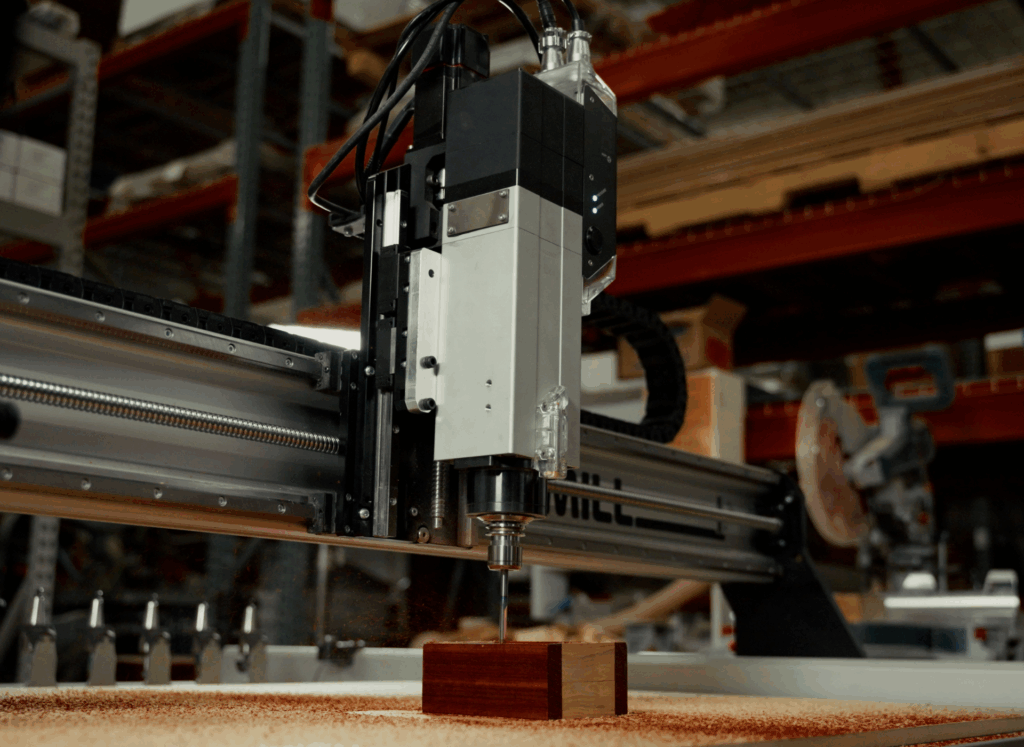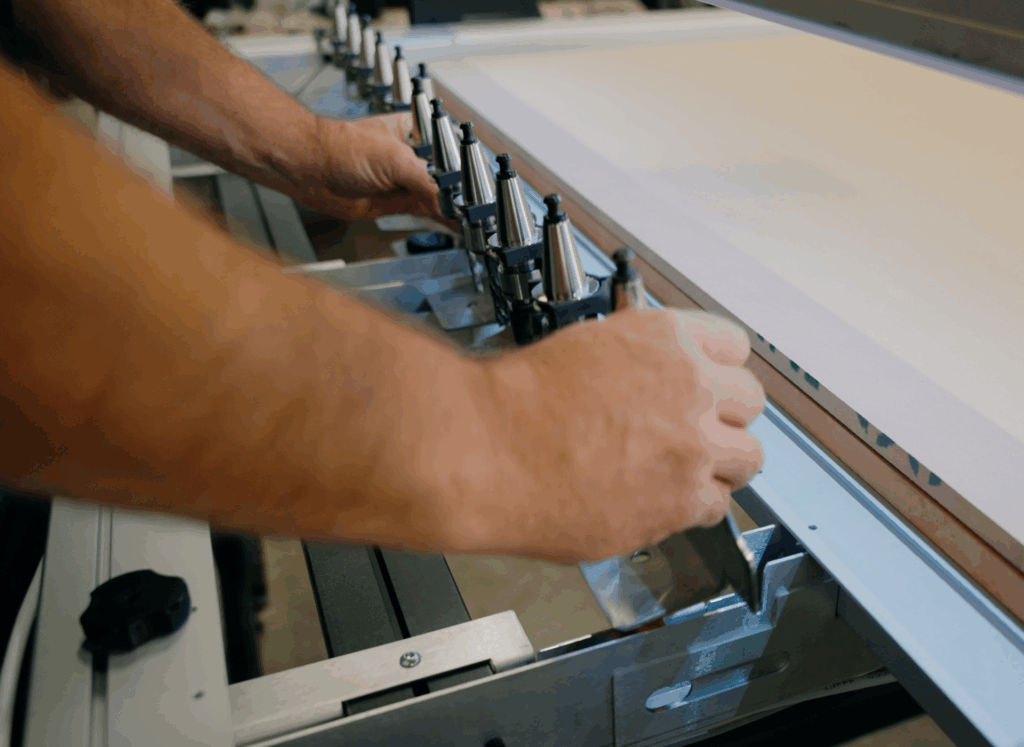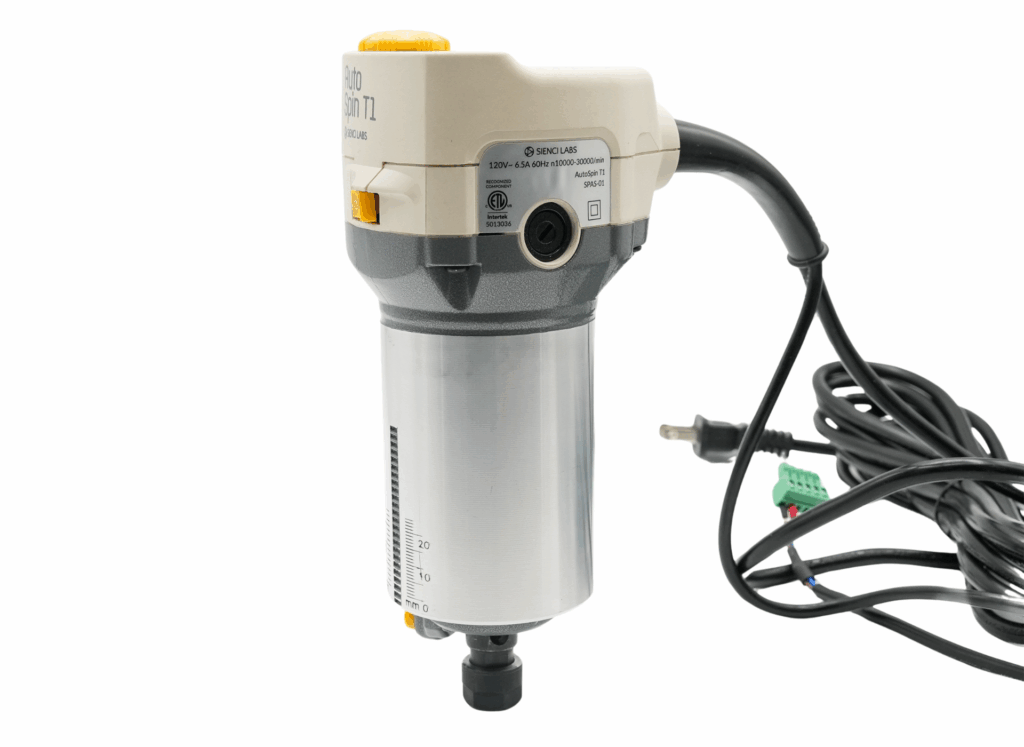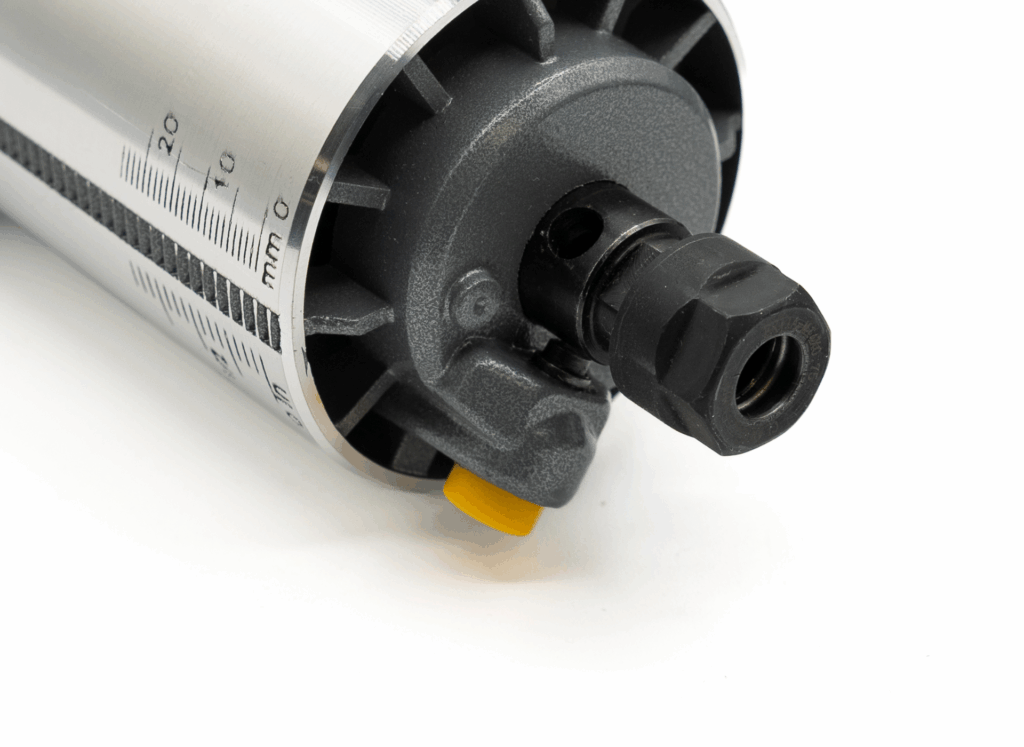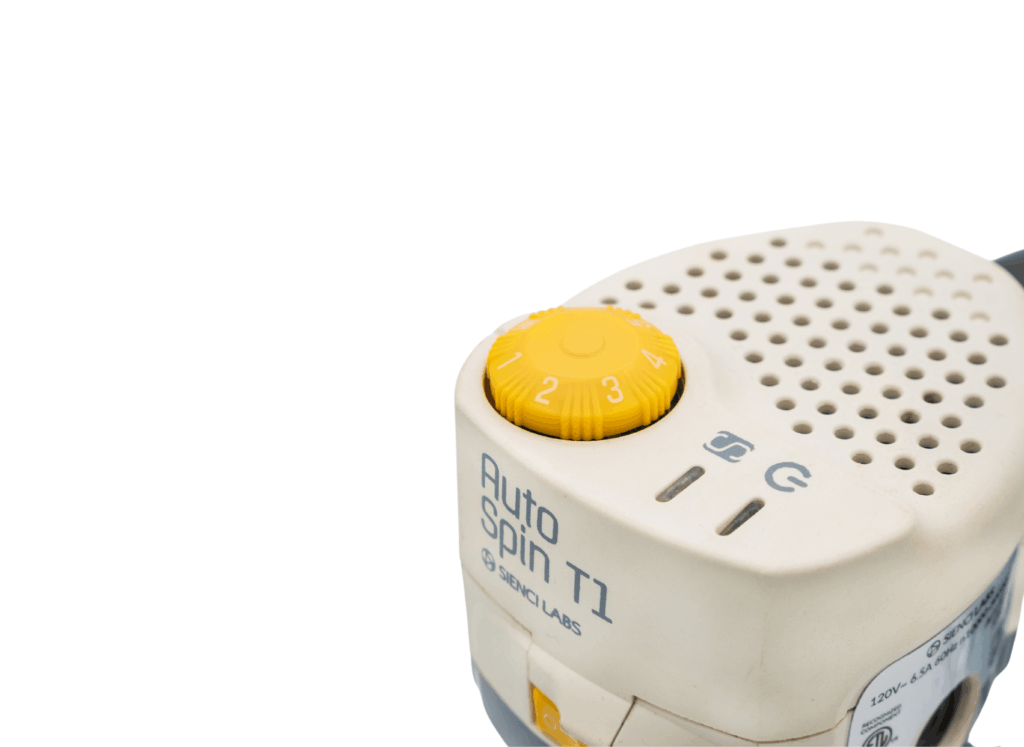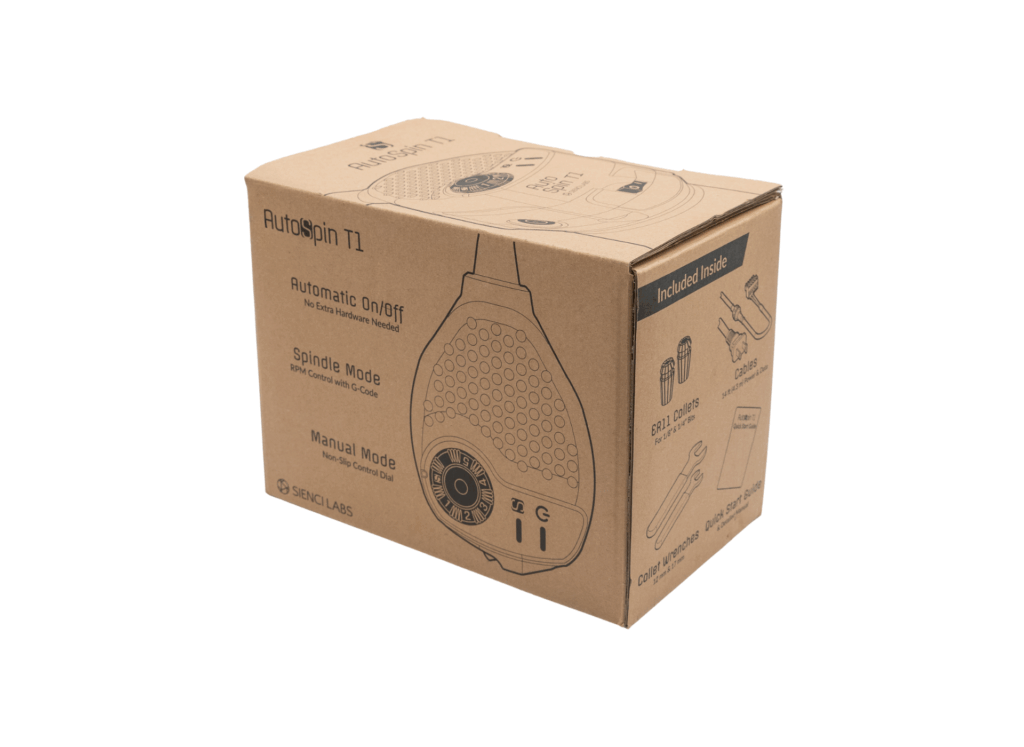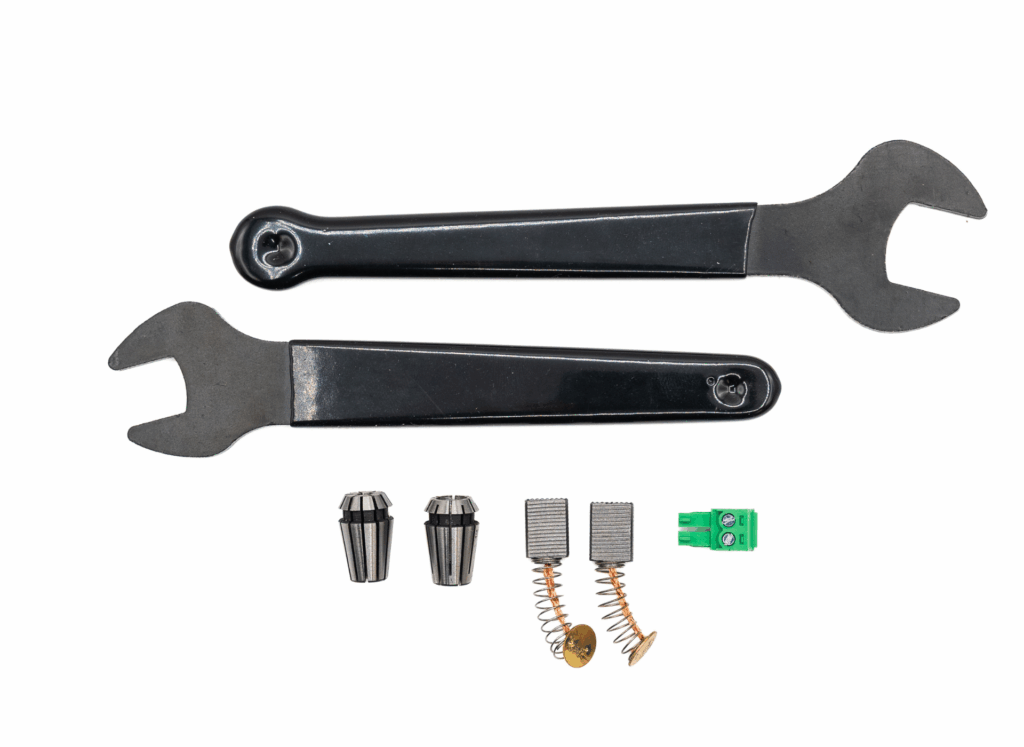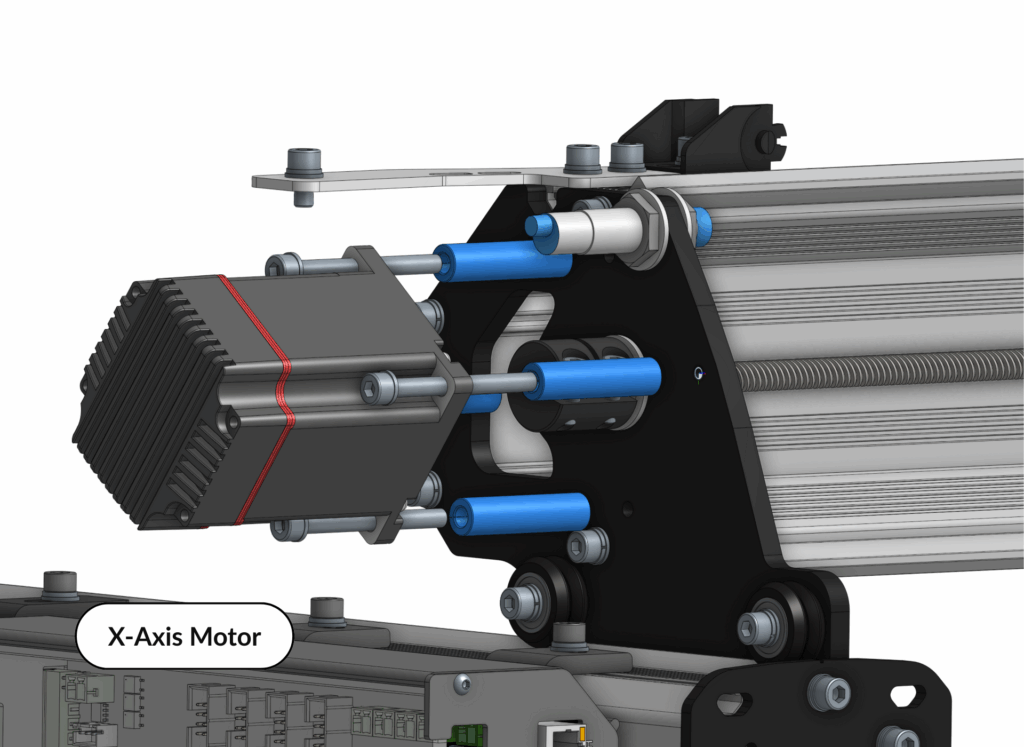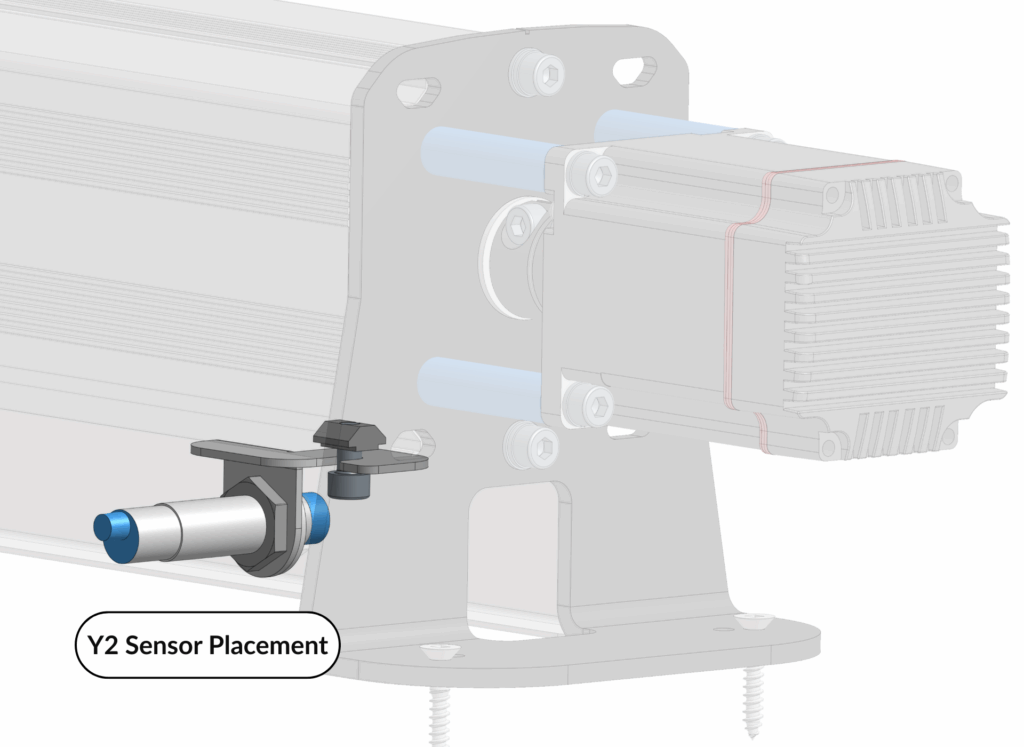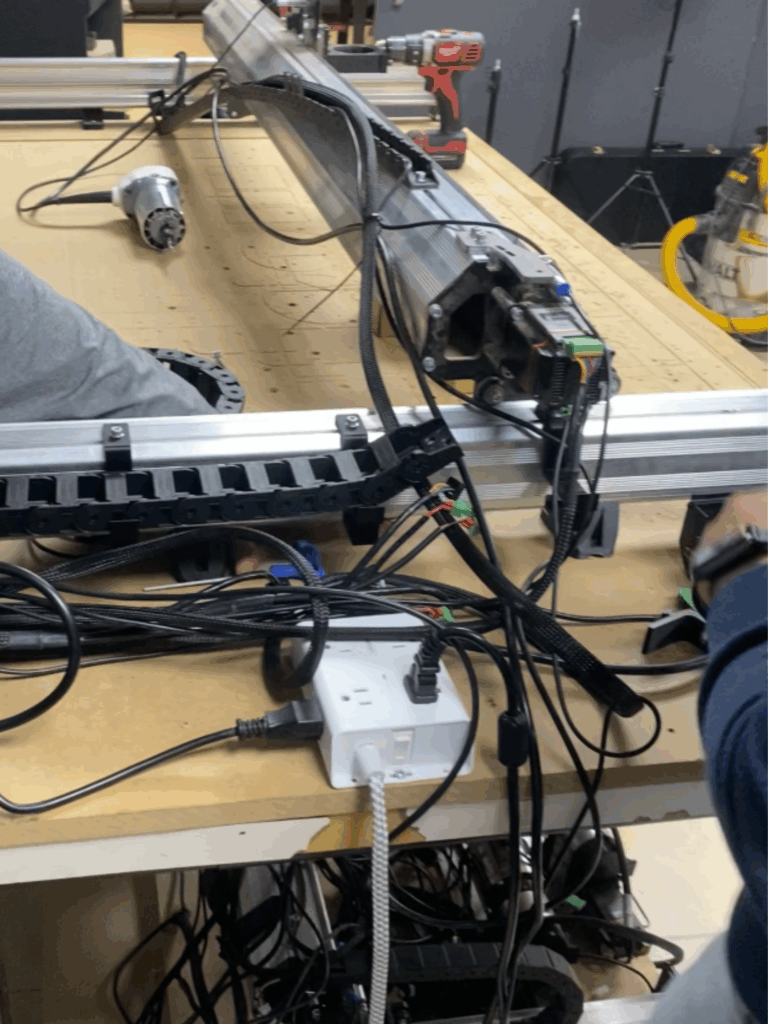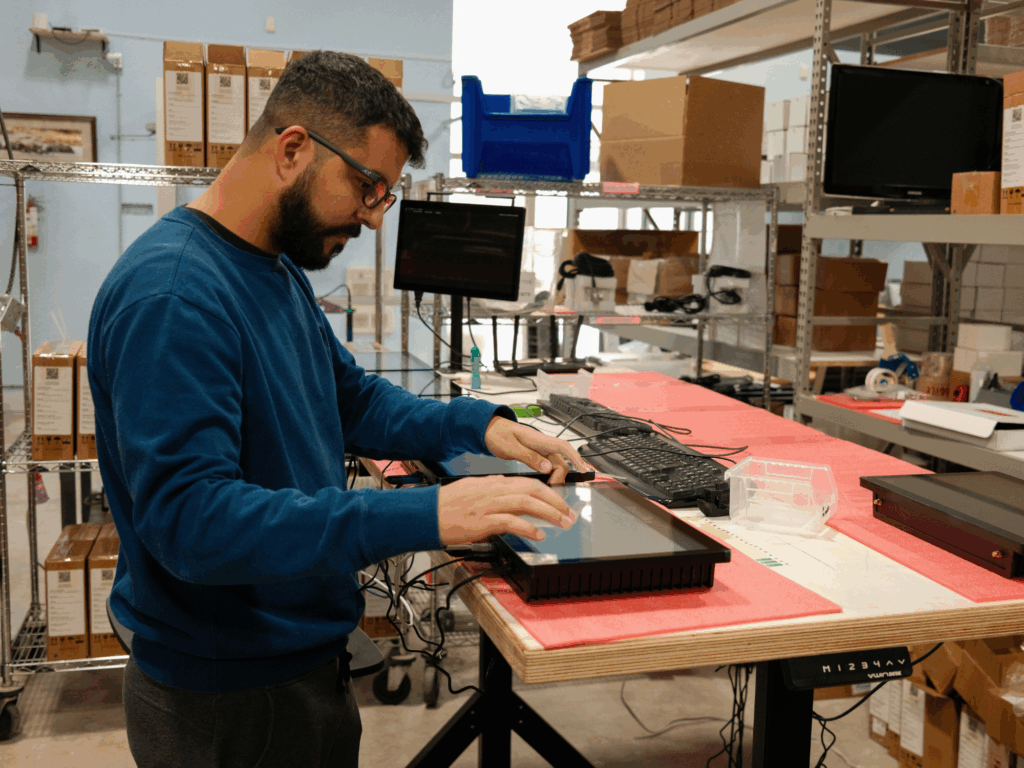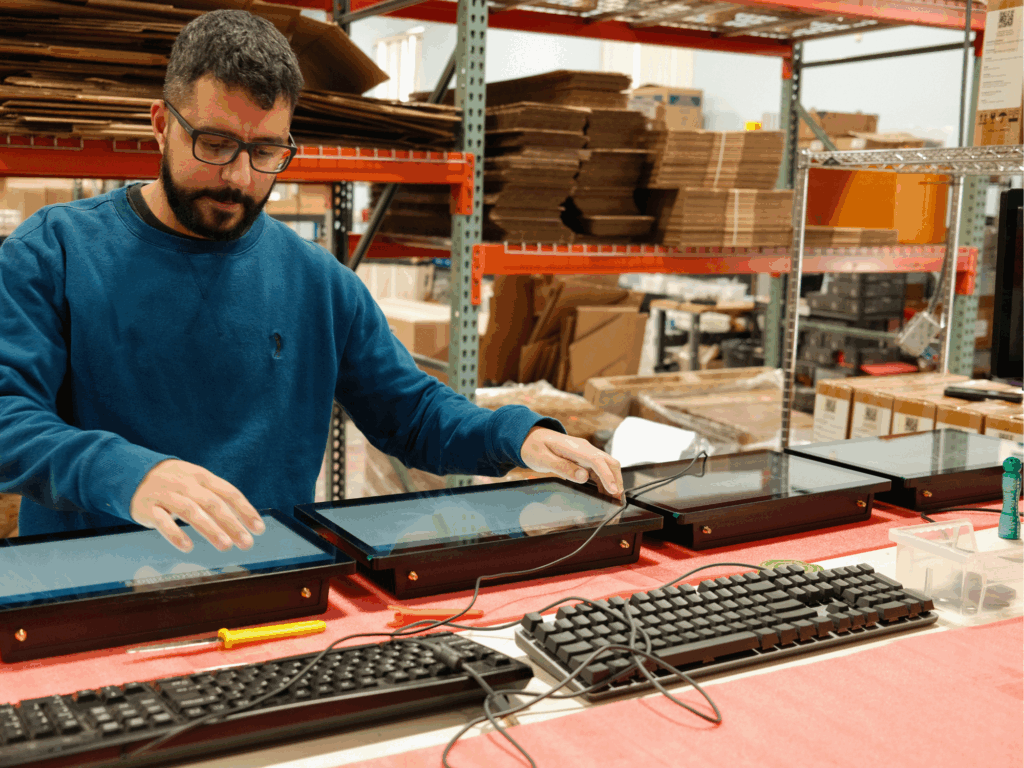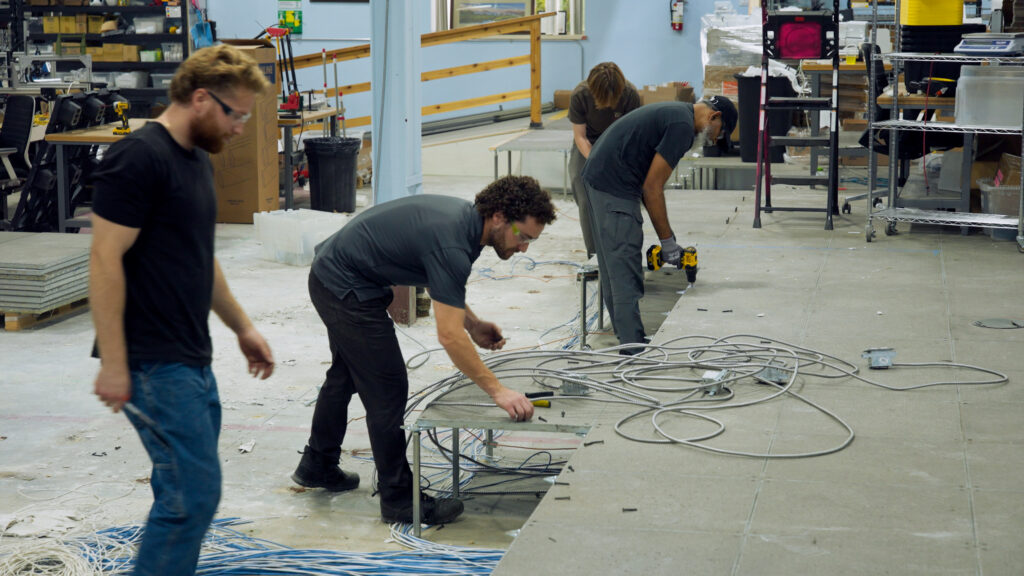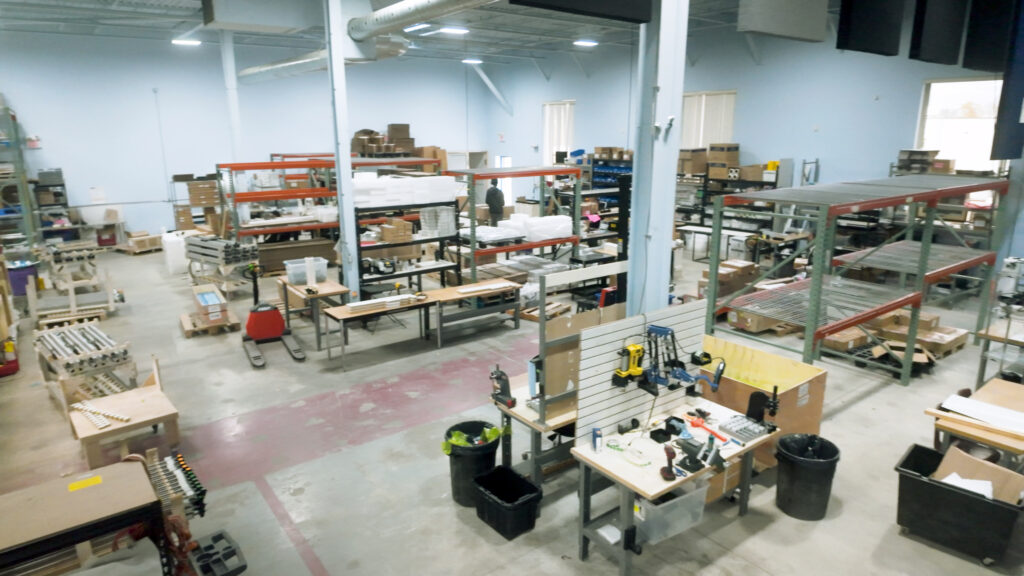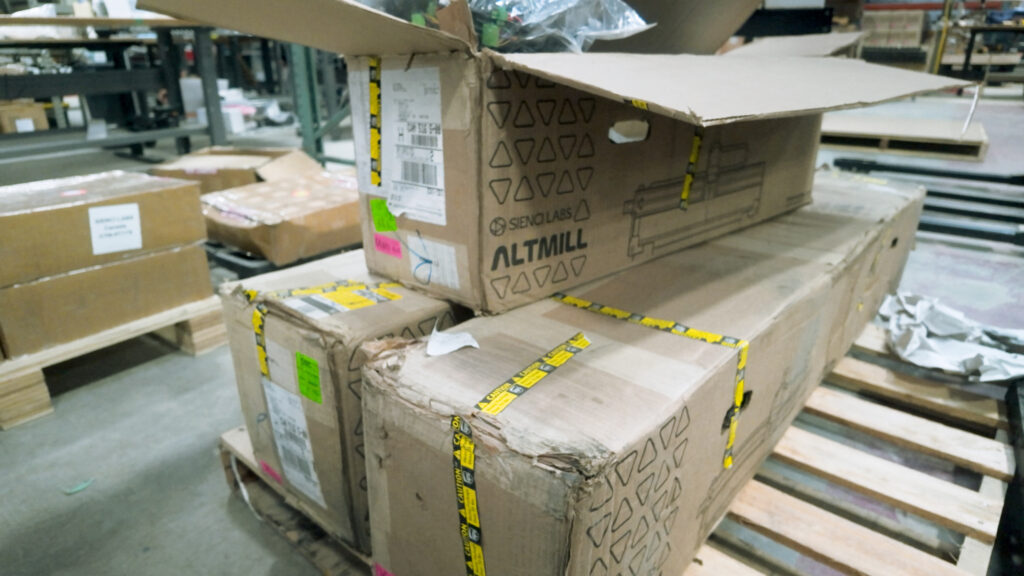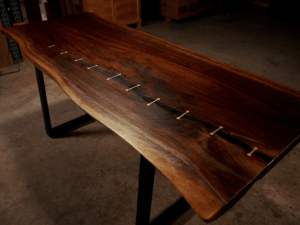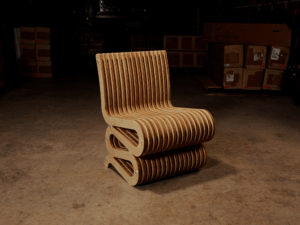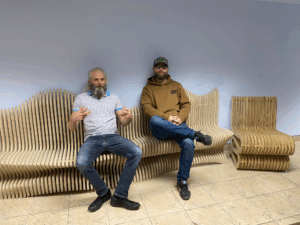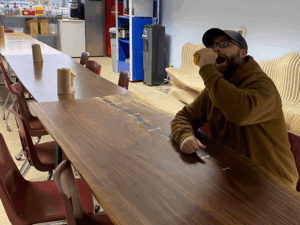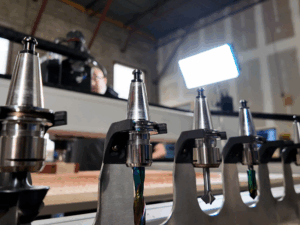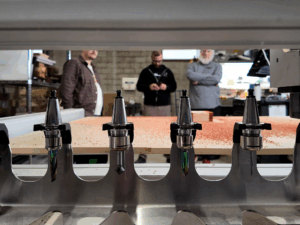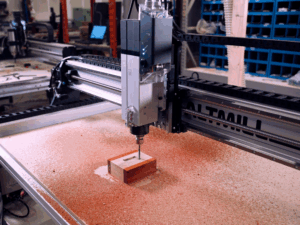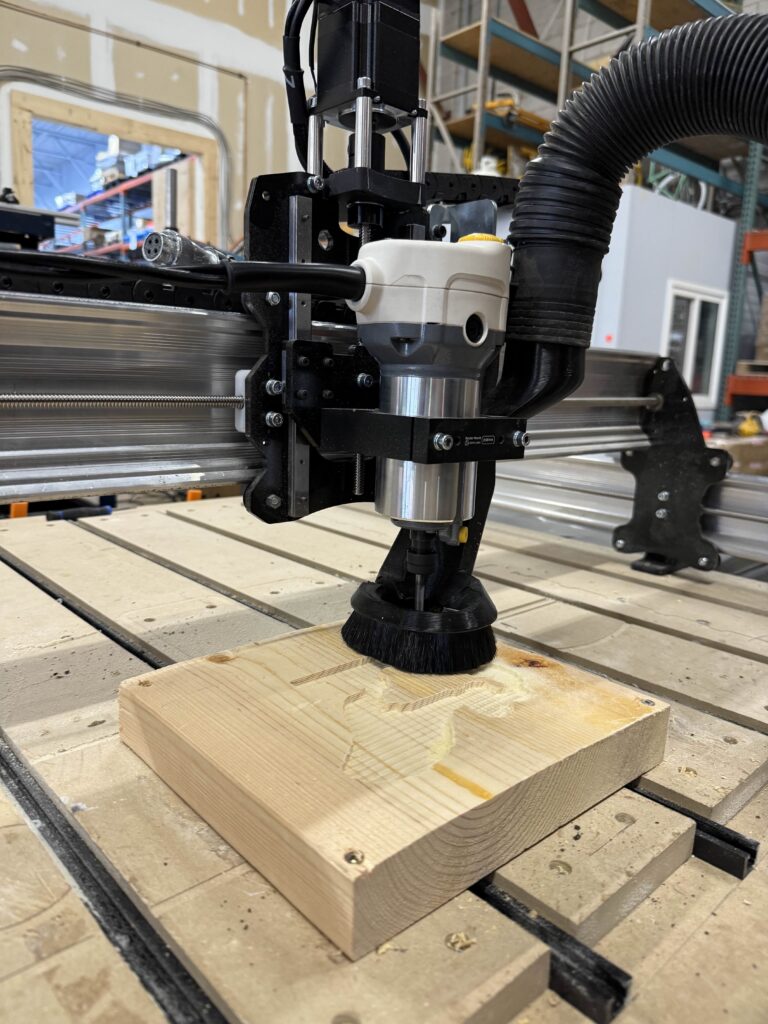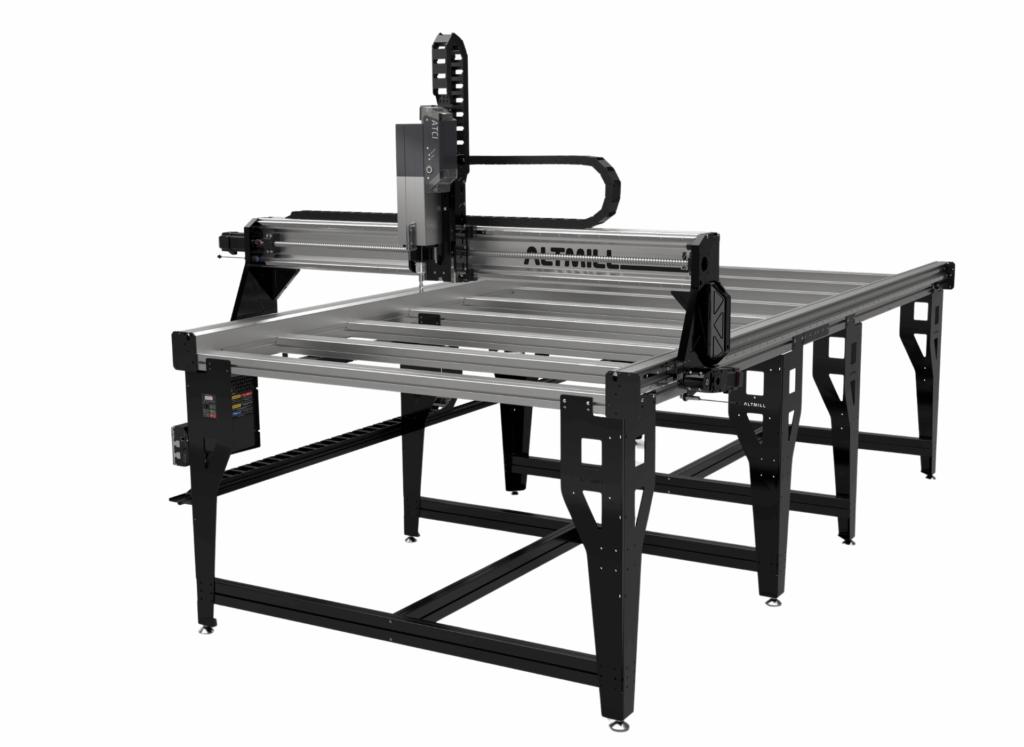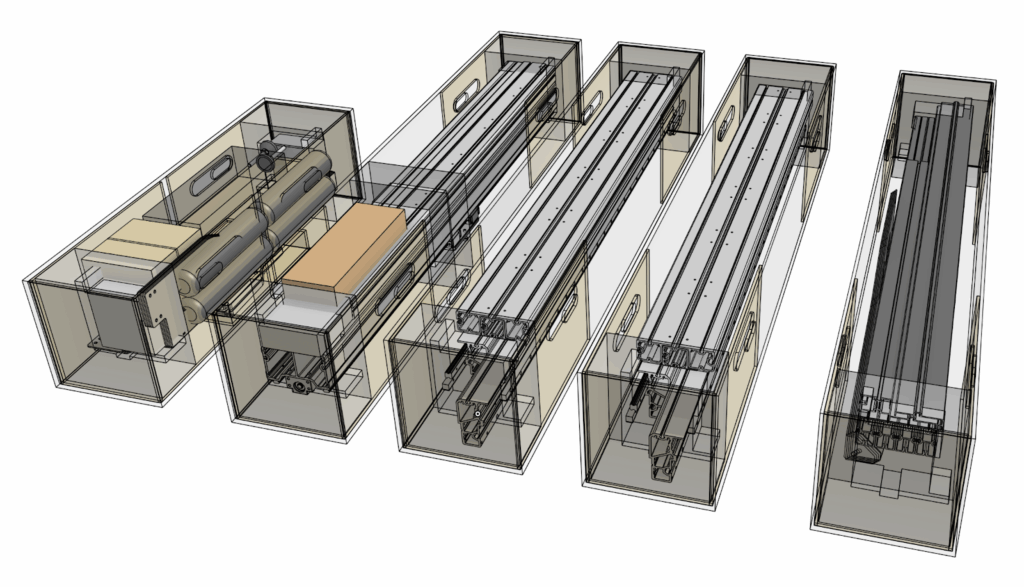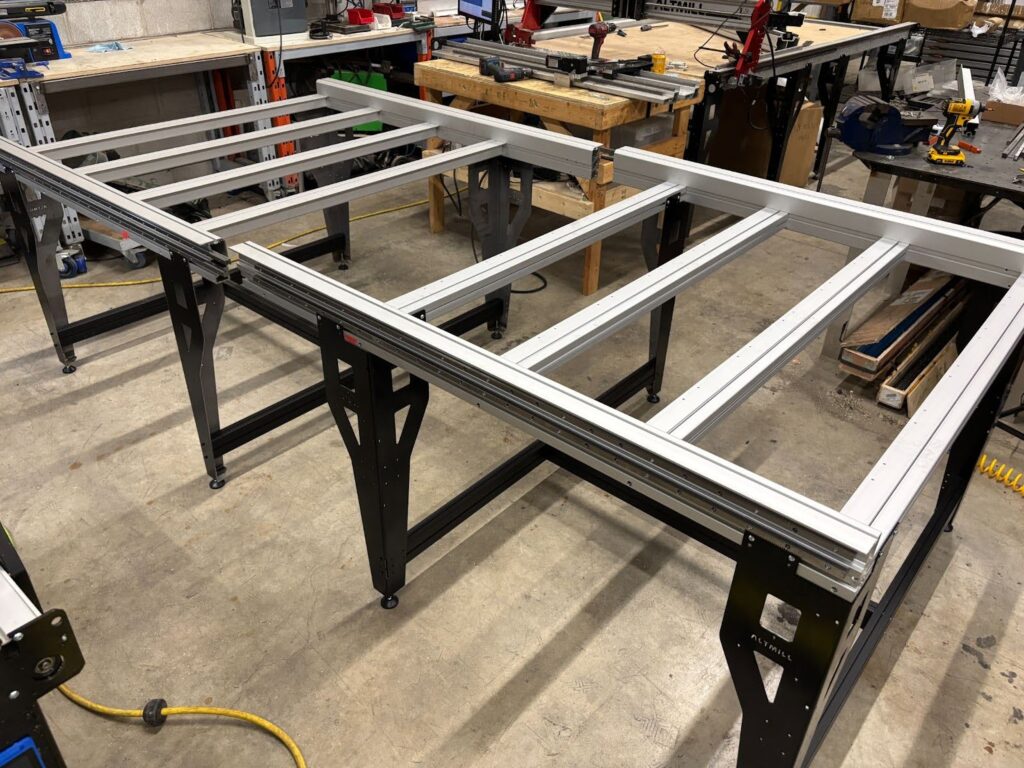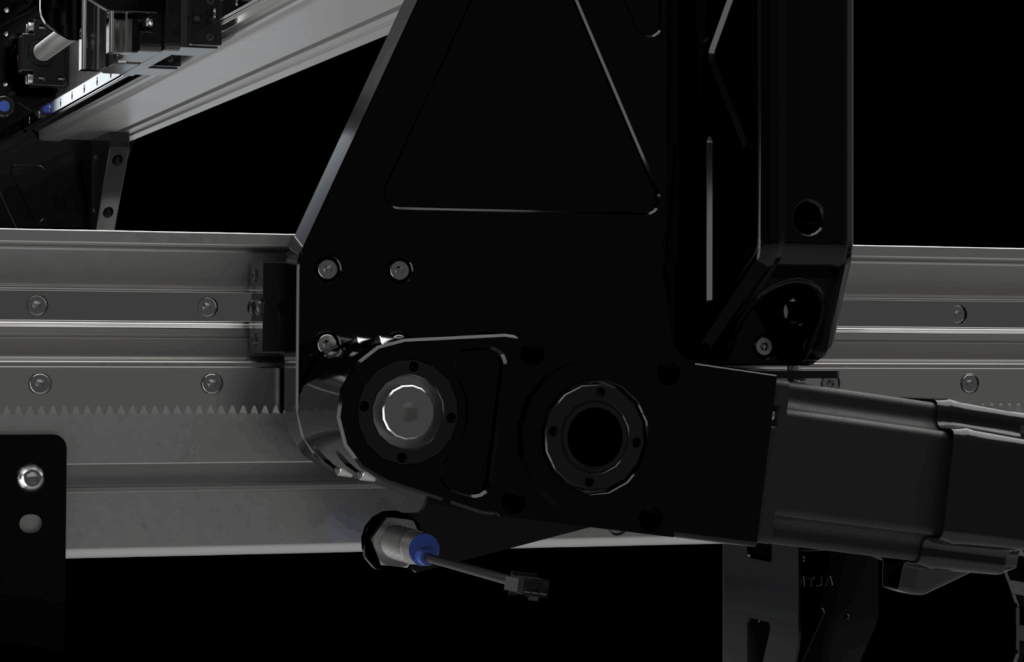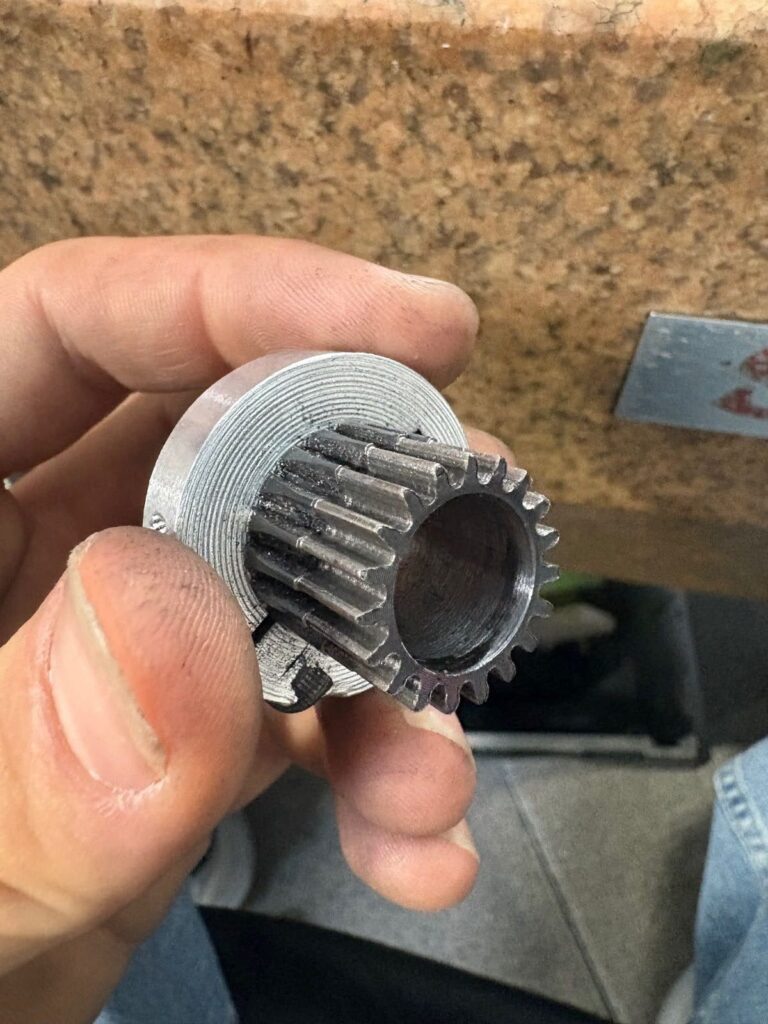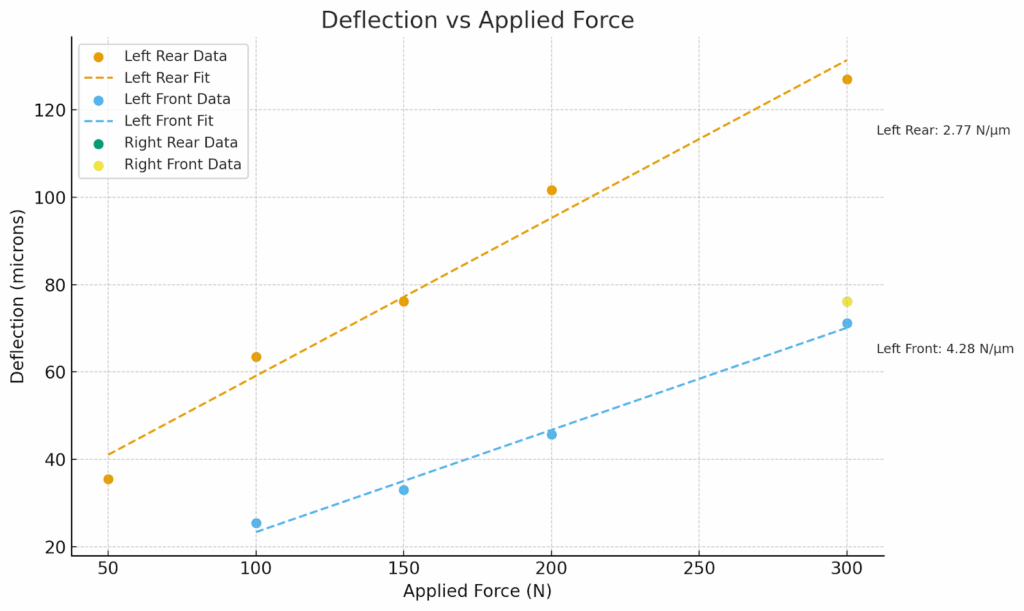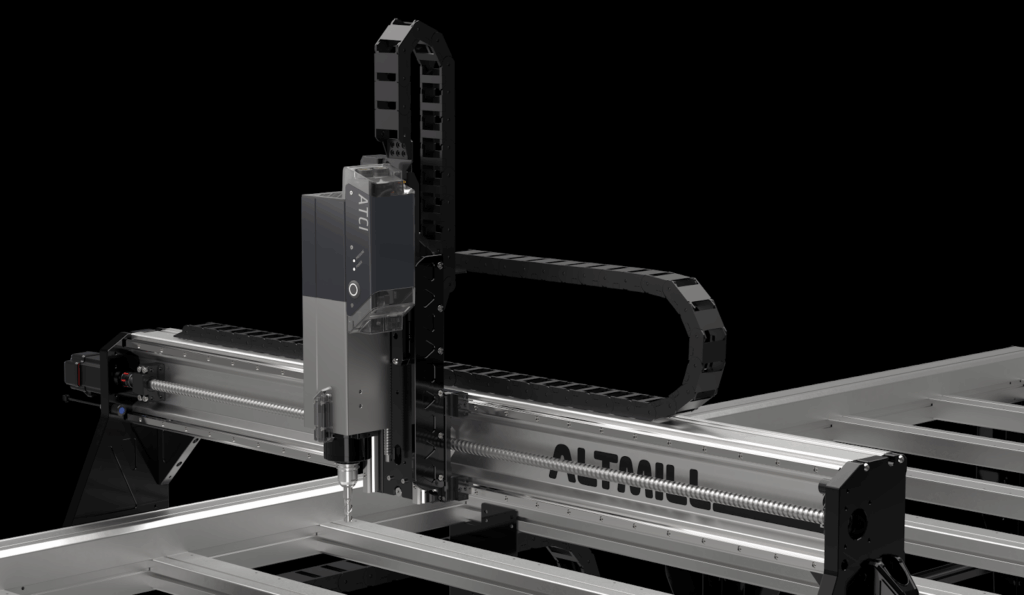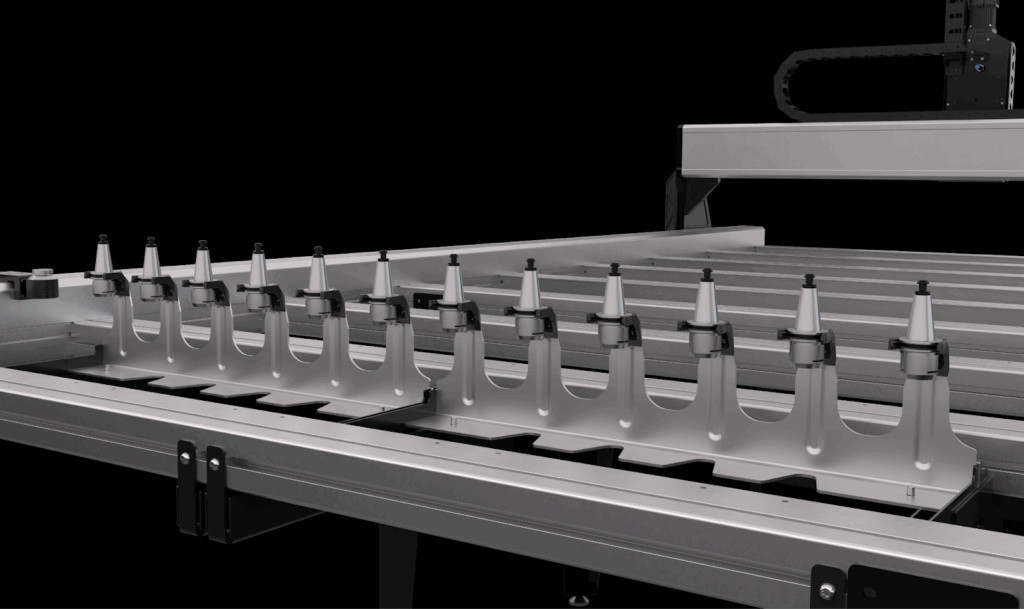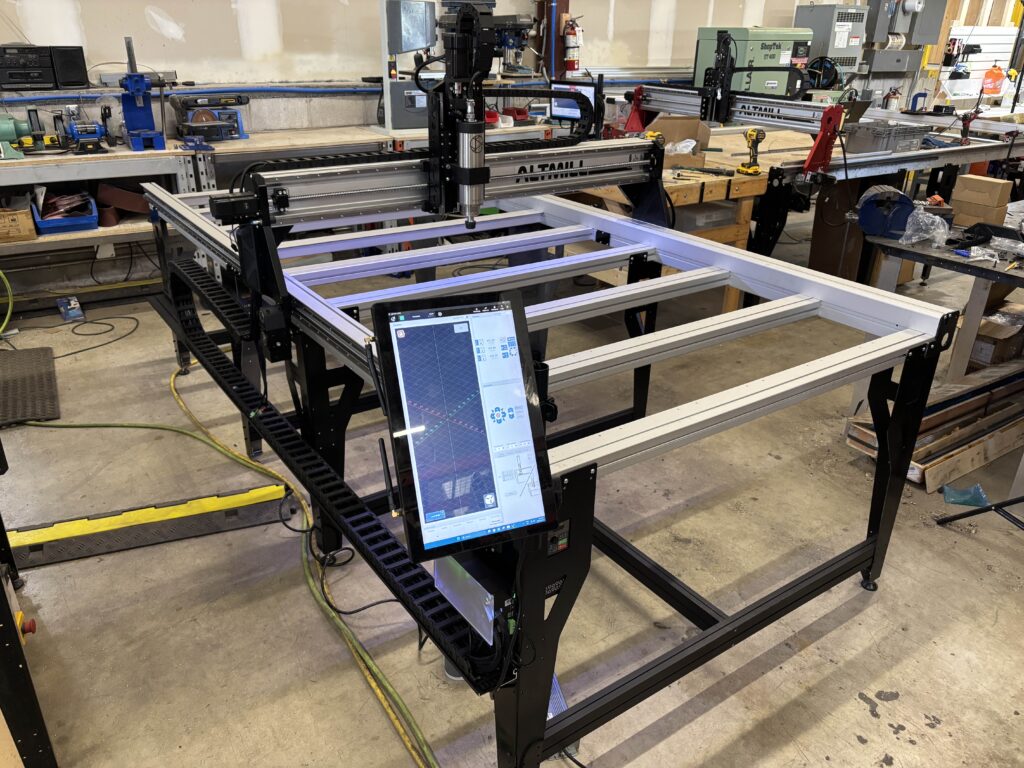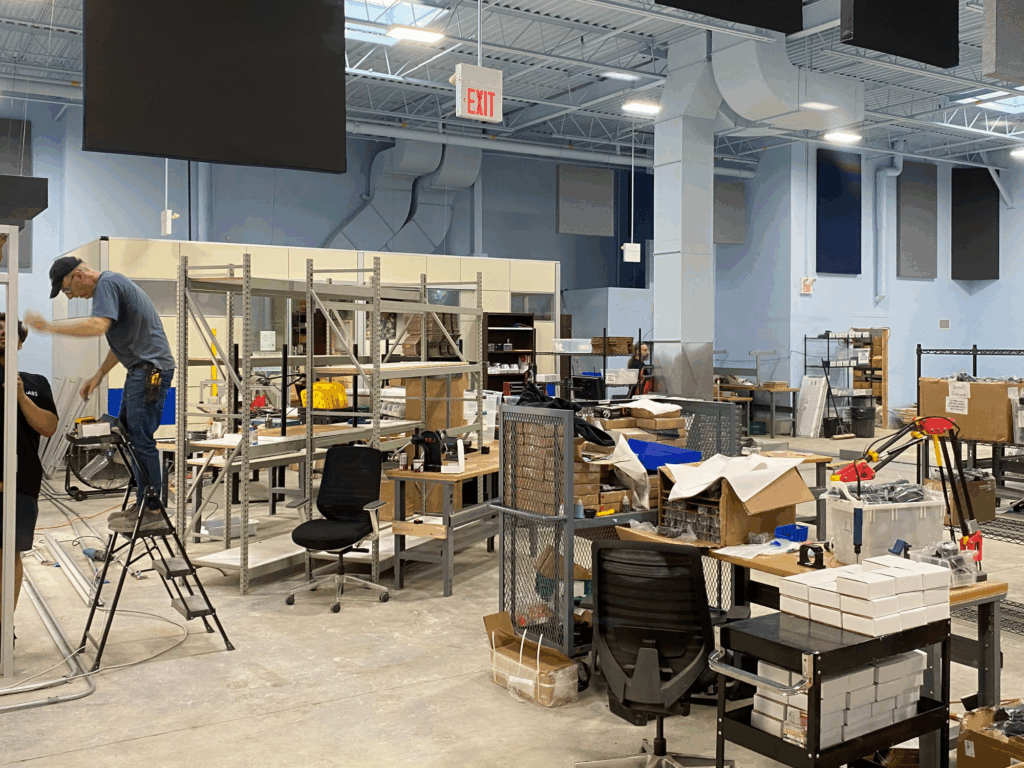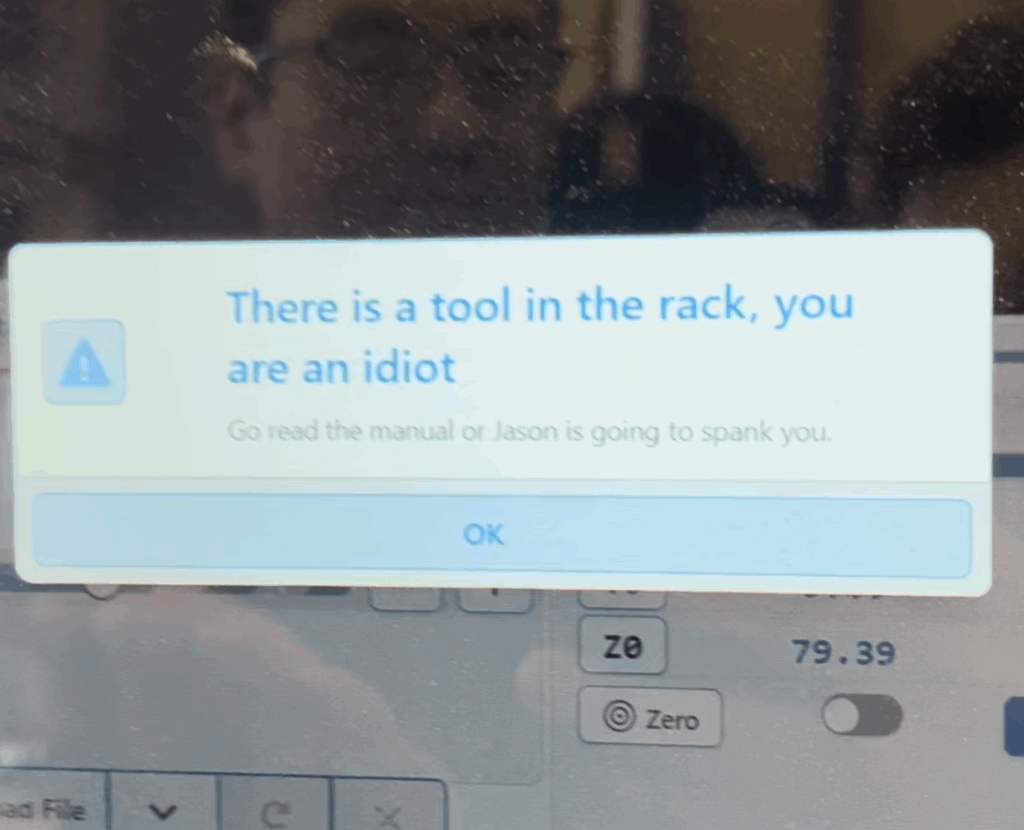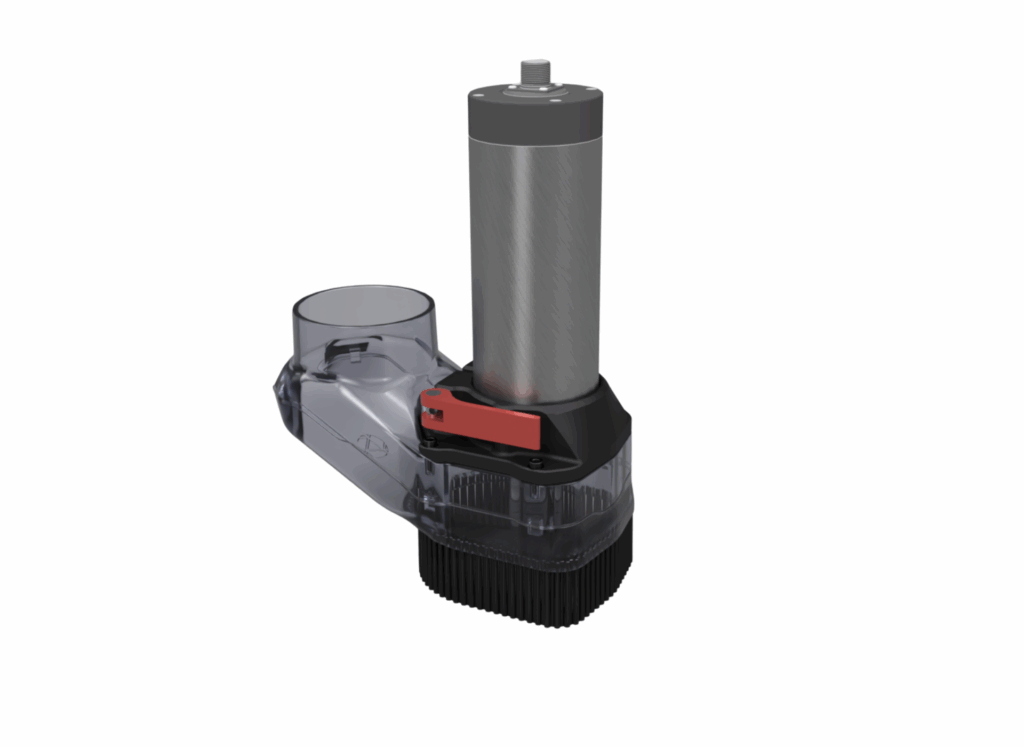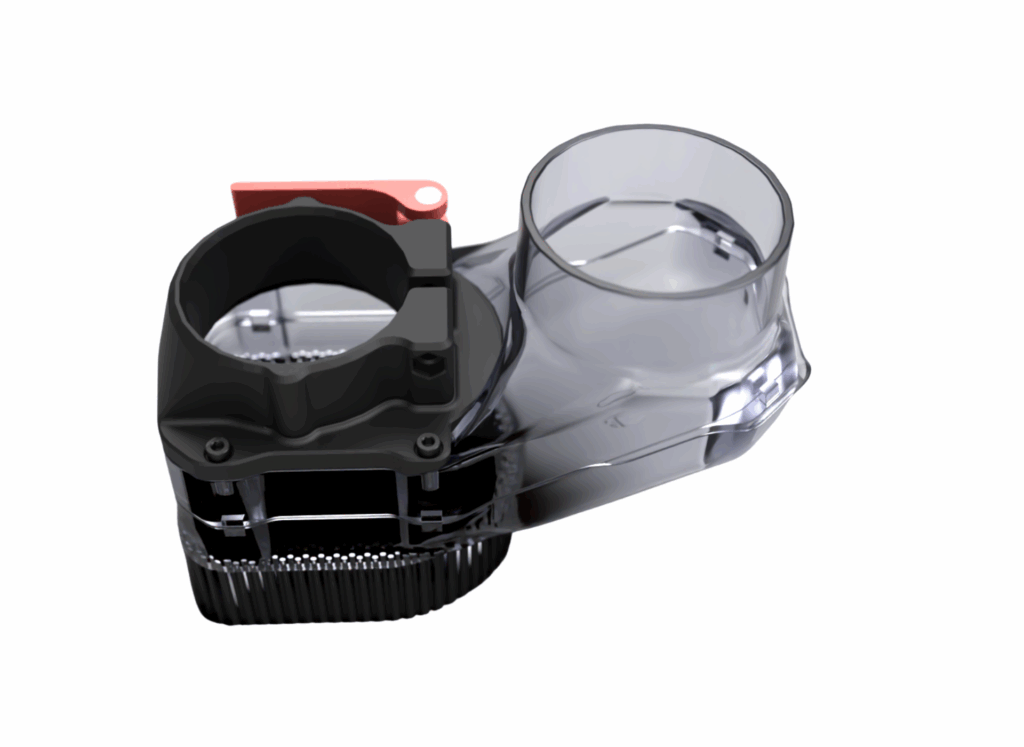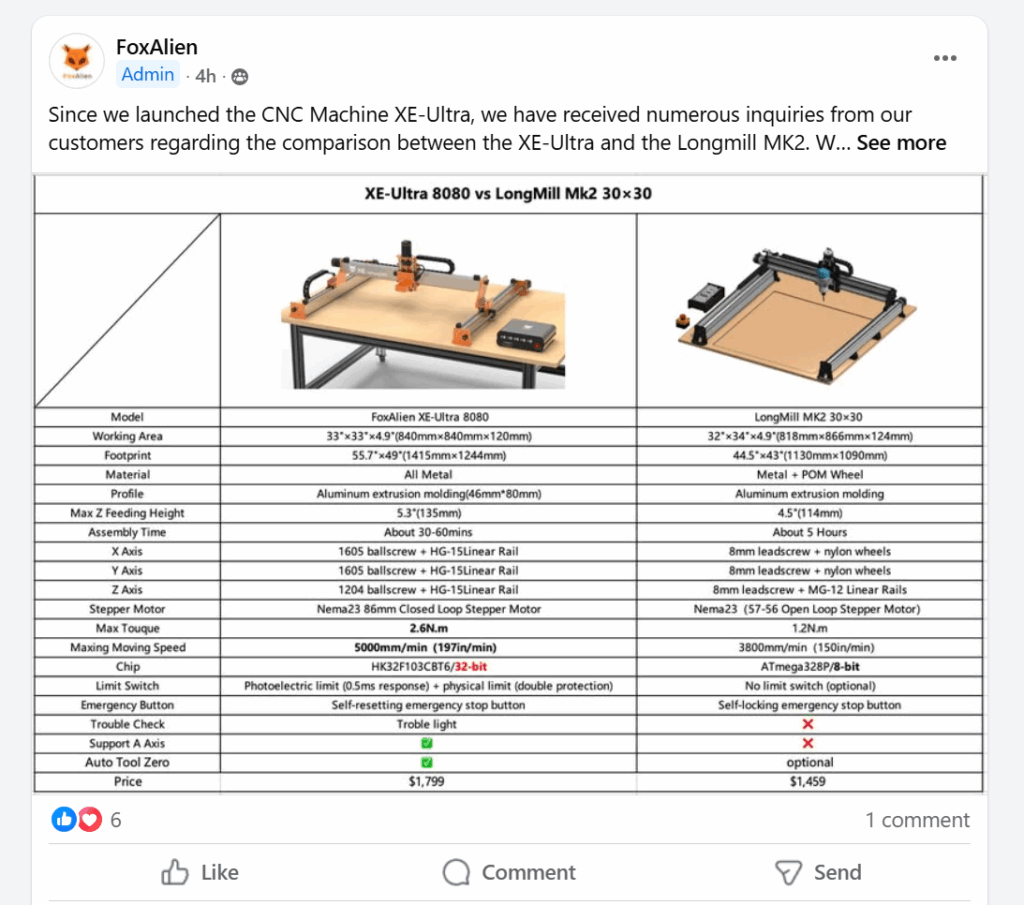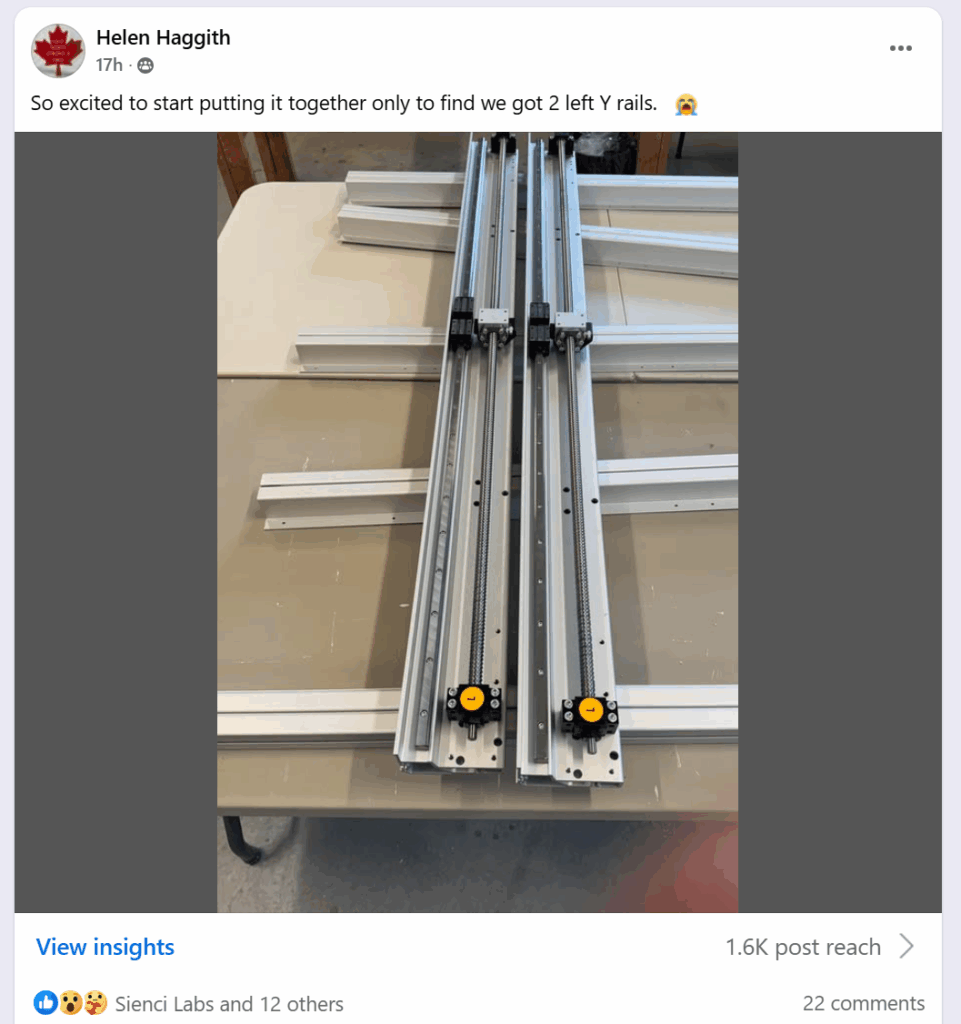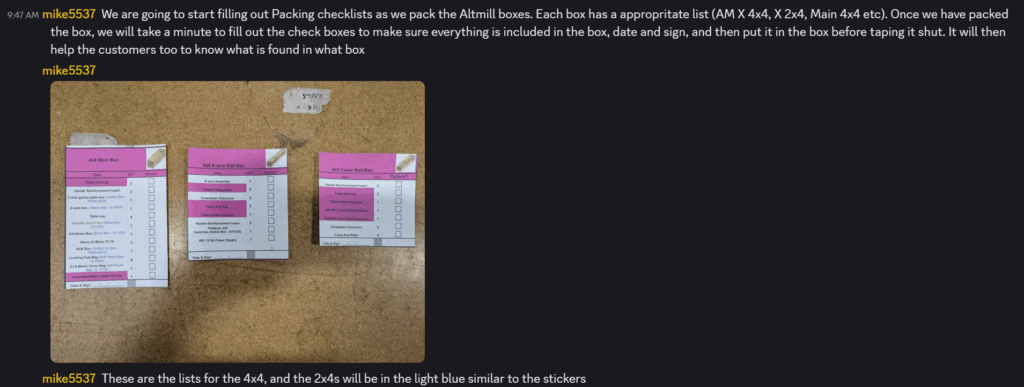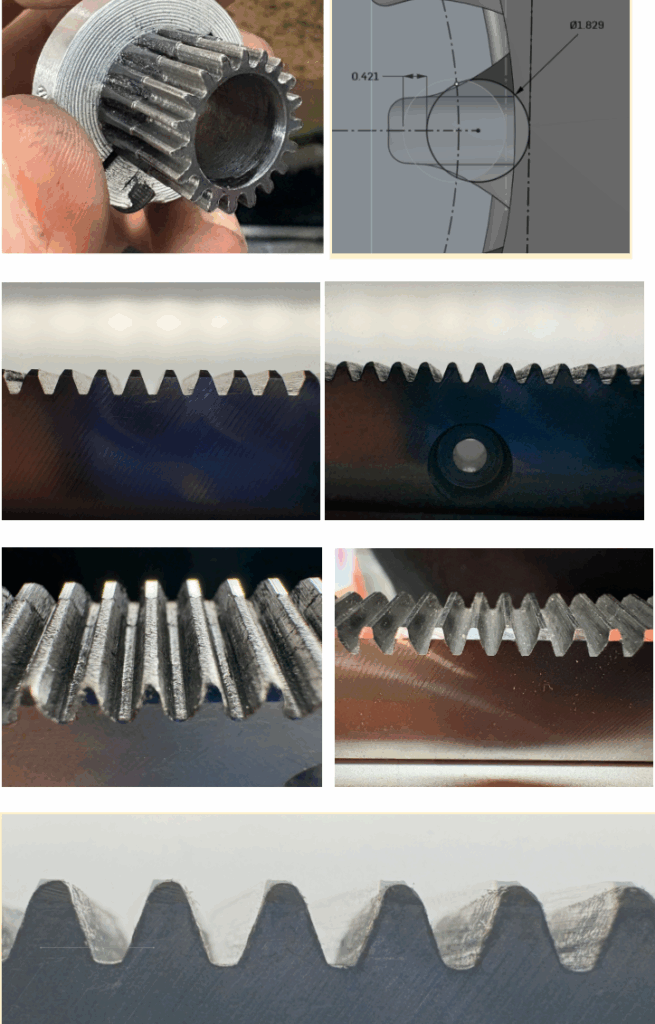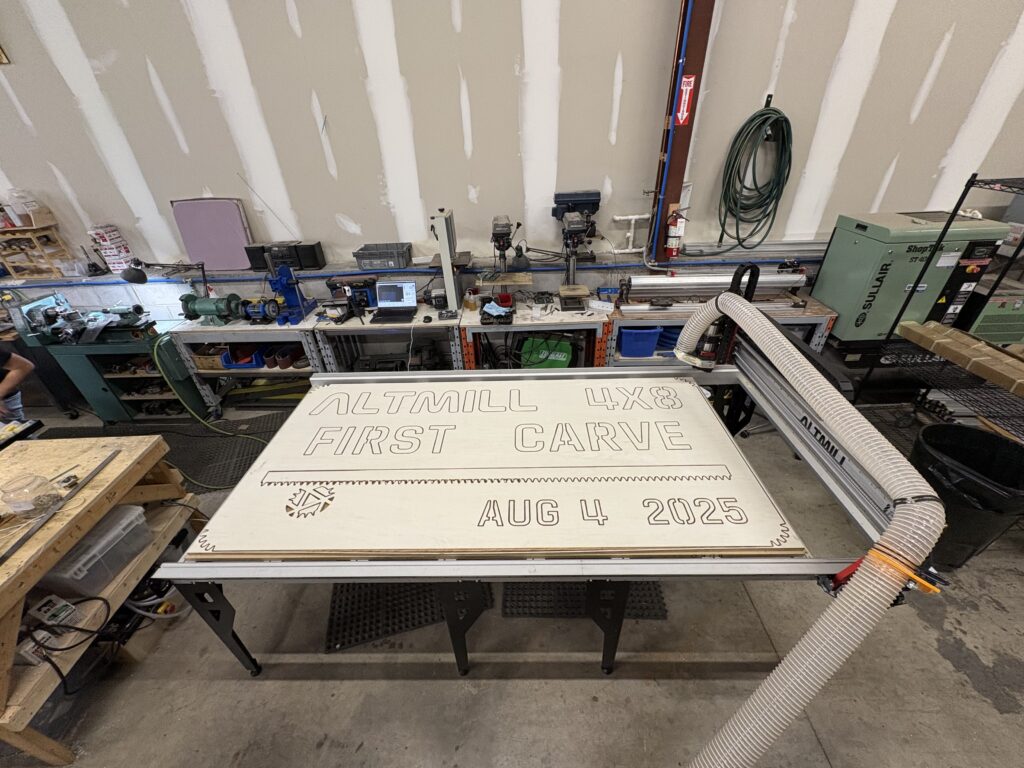We’re excited to launch the Closed-Loop Stepper Motor Kit to the community. The Closed-Loop Stepper Motor Kit (CLSM Kit) is a complete kit including the motors, cables, controller and other hardware required to convert any LongMill MK2 or MK2.5 to use closed-loop stepper motors.
Order your kit here: https://sienci.com/product/closed-loop-stepper-motor-kit/
Contents of the kit
Each kit comes with all of the components needed to convert a LongMill MK2 or MK2.5 (any size) to a closed-loop motor system.
- One (1) SLB-EXT Closed Loop Controller, plus:
- Independent e-stop with 3 customizable action buttons
- 2.5m e-stop cable
- 1m USB-C to USB-A cable
- Mounting brackets
- One (1) 48V 10.4A Power Adapter
- Four (4) NEMA 23 Motors and new motor covers
- A drag chain (1000mm) to accommodate any size LongMill, plus drag chain brackets and holder mounts
- Four (4) inductive sensors with mounts for Y-axis
- Sixteen (16) 40 mm blue aluminum standoffs
- Motor cable set (x1 long, x3 short)
- M5x12 bolts
- M5 washers, nylock nuts and t-nuts
- M5x55 screws (for use with the LongMill dust shield)




Resources
Complete resources for installing the CLSM Kit to the LongMill can be found on our Resources site: https://resources.sienci.com/view/lmk2-closed-loop-steppers-2/
Specifications
Motor specifications: Nema 23
Motor (Frame) size: 57mm
Motor torque: 1.2NM
Motor max speed (RPM): Approx. 1500
Voltage: 48VDC
Length: 56VDC

Cable Lengths
X cable: 1.8 m
Y1 cable: 1.4 m
Y2 cable: 2.7 m
Z cable: 3.65 m
Measured from the 2×4 AltMill cables which we are using for this kit.
Changes to the Industry
In recent years, we’ve slowly seen a shift for hobby CNC machines to adopt the use of closed-loop stepper motors. We’ve also seen a shift in the price of the motors coming down over time as well, with the price for an open-loop stepper motor and external driver now at similar levels.
We still see open-loop steppers used in pretty much all budget and entry level CNC machines, but we expect this to change over time as the demands and expectations from the CNC community continue to grow. We also expect as the popularity of closed-loop steppers grow and prices come down, that most machines will start to use them.
Cost of Development and Open Source
We don’t keep exact tracking of how much time and money we’ve invested in this electronics ecosystem, but I would guess at this point we’d be looking at least a million dollars. This includes the development of the controller and electronics themselves, testing of the motors, and development of gSender. We recognize that for many up and coming CNC manufacturers and developers in our space, investing that much into development is not possible.
Pushing this ecosystem to a wider audience should allow CNC manufacturers and developers in our space to get a head start in pushing the ecosystem further and potentially scaling up where they can contribute to future generations of CNC companies.
A good example of this is Masso’s initial decision to move to a subscription model for updates, then a sharp retraction after backlash from the community (https://www.reddit.com/r/hobbycnc/comments/1jtfbkd/maso_reverses_course/).
While this situation changed course in the right direction, it does shed light on the fact that close source CNC control ecosystems reduce the control users and manufacturers have in a core part of their machines.
So why do the fact that our systems are open source matter? Well, it means that if we disappear from the face of the earth, users and companies can replicate and develop atop existing designs and code. We can’t make you pay more for what is already free and openly available.
Some folks may see allowing others to use and duplicate our designs as a potential danger to our business. However, the way we see it is if someone else can make what we already make cheaper or better, it would serve us to use this development for ourselves as well. The fact of the matter is that developing a CNC company is so much more than just the designs themselves. It’s also the resource development, customer service, community, and continued innovation that needs to be there in every company to succeed.
Closed-loop Steppers vs Open-loop Steppers
Closed-loop stepper motors are simply faster, more accurate, more efficient, and more powerful than an equivalent open-loop stepper motor, with the added benefit of being able to detect when it loses steps. This also adds another layer of safety, as our control systems automatically shut off attached peripheral devices like spindles and lasers when the machine loses its position.
How does this work? Well, with an open-loop stepper, you can think of the motor having a “cog.” When we want to move the motor, we send it a signal to move a single step forward or backward. In the case of most standard stepper motors, there are 200 “steps” in a motor (there’s also something called microstepping but we won’t get into that today.) By sending a specific number of step signals at varying speeds, we can control the angle of rotation specifically and the speed of the rotation as well.
When the system works without being overloaded, the system works quite well. However, when a load exceeds the amount that the motor can handle, the motor “skips a step.” This means that the cog goes out of line and the machine loses it’s position. However, because there is no feedback system in the motor, even if the motor loses its position, the motor will keep moving.
The reason why an open-loop stepper is less efficient than a closed-loop stepper is because not only do you need to move the motor forward, you also need to apply a force to keep it from overshooting its position. This is to say, if you wanted to move the motor a full rotation by sending a signal to move it 200 steps, it also needs to consume power to keep it in position so that the motor does not overshoot into the 201st step.
Closed-loop steppers on the other hand are structurally the same as an open-loop stepper motor, with the exception of having an encoder built onto the shaft that allows the microcontroller to measure the position of the motor continuously as it rotates. This means that the motor can act more like a bicycle, allowing the motor to coast in the position it needs to be, and apply a varying amount of power to keep the right speed up. By comparing the position of the motor using the encoder with the position the controller requires, it can adjust its position thousands of times a second.
When the motor becomes overloaded and the motor is no longer where the controller expects it to be, an error message is sent to the controller by the motor which allows the machine to emergency stop.
Since we use closed-loop stepper motors with an integrated driver, this also improves repairability and compatibility with many different types of systems as we can swap just the motor, and the driver and electronics inside the motor are specifically tuned for the motor itself. Using external drivers like on the SLB and the original LongBoard (used on older generations of the LongMill) it can be a bit trickier since different motors have different performance characteristics. This is why we tune the drivers to work best with the original motors, but when it comes to compatibility with other, non-Sienci produced motors, we can’t predict the performance.
Economies of Scale
One of the big advantages that we have is that unlike independent manufacturers of controllers, we already have an established volume of production (our machines) that allow us to get to higher economies of scale.
Offering the CLSM Kit for the LongMill is our first step in unifying the technology stacks between the LongMill and AltMill lines, and committing to closed-loop motors on all our machines. This allows us to leverage even larger levels of economies of scale, allowing us to reduce our production costs even further.
We’re also able to leverage economies of scale into the optimization of the motors themselves. In our first batches, we were using off the shelf motors with standard tuning. However, with a recent issue from a new batch of motors that requires us to reflash and reprogram the motors, we started delving into further motor tuning that will in the future allow us to optimize motor performance for our line of products. If we were dealing with a small number of motors, it may not be economical for us to focus on tuning those motors, but if we’re dealing with a large number of motors, we can spread out those efforts more, making the cost of tuning less per-motor.

Right now the CLSM Kit uses the same motors as the AltMill 2×4 and 4×4 (Z axis motors) and shares cabling with the AltMill 2×4. We expect to see some interchangeable use of parts between the AltMill and LongMill lines as we continue to develop these products into the future.
Future plans
The closed-loop stepper motor system and SLB-EXT systems are a great, feature-filled, proven platform for mid-level and semi-professional use. However, we do acknowledge that it’s expensive for entry-level hobbyists. One of the projects we intend to work on is to create a more affordable version of the SLB-EXT and peripheral electronics that fit better with hobby level machines. This will open up some new possibilities with developing more affordable, entry-level machines.
We also believe that opening up the use of our electronics platform and software will open up new possibilities for people looking to update and upgrade their existing systems, as well as supporting emerging CNC manufacturers to integrate our systems into their own machines, reducing their cost of development.
Pricing
The complete kit is available for purchase for $560USD/$795CAD. Kits are expected to start shipping out in around 2 weeks from time of purchase.
FAQs
What machines can I use this kit for?
We have specifically designed this kit for use with the LongMill MK2 and MK2.5. Each kit comes with all of the hardware and electronics needed to make this conversion.
We believe that this kit can also be used with non-Sienci built CNC machines, such as DIY kits and other hobby CNC machines. However, we do not have resources and guides to help customers on the assembly process at this time.
Does it come with software?
The CLSM Kit comes with the SLB-EXT which is compatible with our free, open-source, and powerful control software, gSender. This allows users to use the full range of gSender features.
Can I buy a LongMill now with the CLSM kit instead of the open-loop motors that come by default?
At this moment, no. We are planning to release a LongMill MK3 in 2026 that will offer the LongMill with closed-loop stepper motors as the default option. TBD on announcement and launch plans but news should come out sometime in the spring. Stay tuned for future blog posts and news via our socials.
If I have a SLB already, can I use that instead of the SLB-EXT?
Unfortunately, no, the SLB does not have the motor connections that allow it to interface with the closed-loop stepper motors and the power distribution circuitry to power all of them.
Why is the LongMill MK1 not supported?
Given that there are much fewer LongMill MK1s currently in the wild, and the mechanical structure of the machine is less suitable for more powerful motors, we opted to focus on only supporting the LongMill MK2 and MK2.5.
Do you have any drawings so I can adapt to another brand CNC?
Yes! You can download all plans here.
